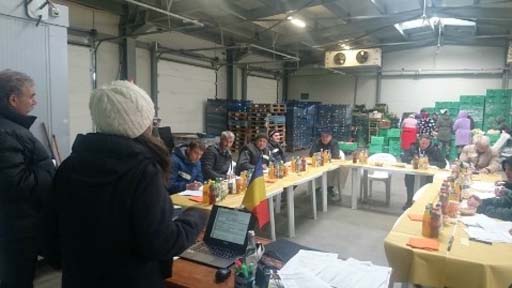Session 7 Living with a Living Lab: some dos and don’ts

We are now getting to some key lessons we have learned about Living Labs in agricultural settings. First, watch the following video for the headline lessons before exploring these lessons more fully in the rest of the session.

Transcript
EGIL PETTER STRATE:
In this session, we'll look at some key do's and don'ts in running Living Labs. This is not a list of different things to do or not to do, like a recipe as the context and need for a Living Lab can vary so much. They are but more a set of common factors or ingredients that we found important for a good outcome.
The first factor is to be realistic in whether a Living Lab is needed at all and who should decide the answer. If a Living Lab is thought to be needed, it is important to get the trust and a mandate from those who want to be involved.
Next it is necessary to be flexible and be able to adapt the roadmap of the Living Lab to the stakeholders, their preferences, and behaviours. That is why having a named facilitator and also a named monitor with the appropriate knowledge and skills working together is helpful in reviewing and checking what has happened and needs to happen next.
Lastly, keep in mind, what was the original aim? And don't start to like the process more than the goal. Good luck.
In previous sessions, I have shown you how we thought about what the nature of Living Labs for innovative agricultural services should look like. I have explained how we have used design thinking, systems thinking and reflexive monitoring to treat the Living Lab as systemic inquiry where we consider the whole process to be a learning system.
This means we were not just concerned with the actual ‘solution’ but the processes that were used to try and develop a solution or solutions. But the question remains as to whether Living Labs are suitable for the task of creating innovative agricultural advisory services and, if so, how can they be made as useful as possible?
In this session, I will try to answer the second question by looking at the challenges, the strengths and weaknesses, and the dos and don’ts that we uncovered in the AgriLink Living Labs before looking at the first question in the final session.
 Reflective Activity 14
Reflective Activity 14
If you have got this far in the course, you must be intrigued by the notion of using Living Labs to create innovative agricultural advisory services, but from what you have learned so far, what would you think would be the biggest challenges when setting up a Living Lab? Write your answers in the text box below.
Answer
Several challenges were identified, and although linked, none were common to all the Living Labs. But some of the biggest challenges were essentially who pays for this to happen, how do we get the right people to run it and how do you keep all parties on board? There are others which I will come to later, but for now I will look at these three challenges.
First, paying for a Living Lab. Living Labs represent a considerable investment in time and resources, so the difficulty of creating a viable business model for a Living Lab emerged as a key challenge for several Living Labs. Part of this difficulty is centred on developing a business model for a Living Lab as a one-off, time-limited process. The very essence of the Living Lab model and the conditions required for their use does not lend itself to long termism implied by a business model and business planning. It is also difficult for a more informal, multi-party ‘organisation’ such as a Living Lab to have an operating model and structure that can operate a business model. A business model where users such as farmers incurred a direct payment charge for a Living Lab might alter the ethos of the Living Lab and become a ‘service’ with expectation of certain results and outputs, narrowing the scope and effectiveness of Living Labs as more open processes.
Second, getting the right people to run it. Even where Living Labs are supported, the role of facilitators and monitors is critical to the work of a Living Lab and would require sufficient funding alongside funds for prototyping and testing as a minimum. While it is feasible to have dedicated people in a funded research programme such as AgriLink, the question of how Living Lab personnel could be funded in a more commercial context or ones working parent or co-projects also raises questions over roles and responsibilities.
Third, keeping all parties on board. Having to be flexible and adaptable to the situation and diverse stakeholders’ needs proved to be challenging for several Living Labs trying to maintain efficiency and effectiveness. For example, in one Living Lab additional efforts were required to interpret technical and research material and language for farmers. Another Living Lab noted that even with highly motivated stakeholders, existing working cultures and practices and lack of familiarity with stakeholder centred initiatives led to a reluctance to engage in co-creative processes.
Linked to the above challenges, all of the Living Lab experienced greater or lesser difficulties in determining the focus and associated stakeholder ‘demand’ or interest for proposed innovations. This proved particularly challenging for some Living Labs where demand for a service based on cooperation between stakeholders was lower than expected. In some cases, this was due to conflicts with individual commercial interests – the Living Lab could undermine the advisor’s role and (economic) relationship with farmers – and in others because there was limited experience of working collaboratively.
Having read that answer, you may feel that Living Labs are too much hassle, but there are always successes and failures in new or different approaches. The strengths and weakness of any Living Lab cannot be absolute characteristics since either will vary according to the specific context and arrangements of the Living Lab when implemented.
In this respect, the number and type of strengths of a Living Lab is only defined in practice.
Now go to the next section.
